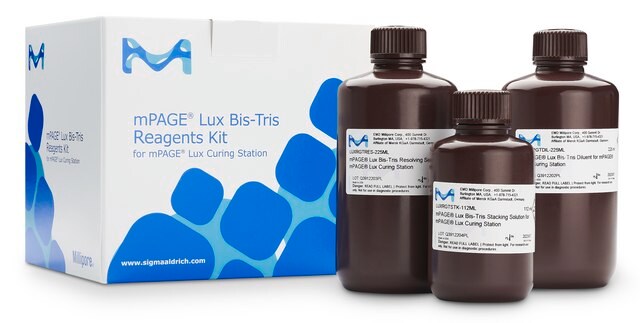MABT323
Anti-CEACAM6 Antibody, clone 1H7-4B
clone 1H7-4B, from mouse
Sinonimo/i:
CEACAM6, Carcinoembryonic antigen-related cell adhesion molecule 6, Non-specific crossreacting antigen, Normal cross-reacting antigen, CD66c
About This Item
Prodotti consigliati
Origine biologica
mouse
Livello qualitativo
Forma dell’anticorpo
purified antibody
Tipo di anticorpo
primary antibodies
Clone
1H7-4B, monoclonal
Reattività contro le specie
human
tecniche
ELISA: suitable
flow cytometry: suitable
immunohistochemistry: suitable (paraffin)
western blot: suitable
Isotipo
IgG1κ
N° accesso NCBI
N° accesso UniProt
Condizioni di spedizione
wet ice
modifica post-traduzionali bersaglio
unmodified
Informazioni sul gene
human ... CEACAM6(4680)
Descrizione generale
Specificità
Immunogeno
Applicazioni
Flow Cytometry Analysis: A representative lot detected exogenously expressed human CEACAM6 on the surface of transfected CHO cells (Courtesy of Dr. B. Singer, University Duisburg-Essen, Germany).
ELISA Analysis: Representative lots detected CEACAM6 in multivesicular bodies (MVBs) from 2 day-starved HT29 human epithelial cells and T102/3 human colon epithelial cancer cells, as well as in human bronchoalveolar lavage fluid (BALF) samples (Singer, B.B., et al. (2014). PLoS One. 9(4):e94106; Klaile, E., et al. (2013). Respir. Res. 14:85).
Immunohistochemistry Analysis: A representative lot detected CEACAM6 in paraffin-embedded human lung cancer tissue sections (Klaile, E., et al. (2013) Respir Res. 14:85).
Western Blotting Analysis: A representative lot detected CEACAM6 in 2 day-starved HT29 human epithelial cells and HT29-derived multivesicular bodies (MVBs) (Muturi H.T., et al. (2013) PLoS One. 8(9):e74654).
Cell Structure
Adhesion (CAMs)
Qualità
Western Blotting Analysis: 0.5 µg/mL of this antibody detected CEACAM6 in 10 µg of HT-29 cell lysate.
Descrizione del bersaglio
Stato fisico
Stoccaggio e stabilità
Altre note
Esclusione di responsabilità
Non trovi il prodotto giusto?
Prova il nostro Motore di ricerca dei prodotti.
Codice della classe di stoccaggio
12 - Non Combustible Liquids
Classe di pericolosità dell'acqua (WGK)
WGK 1
Punto d’infiammabilità (°F)
Not applicable
Punto d’infiammabilità (°C)
Not applicable
Certificati d'analisi (COA)
Cerca il Certificati d'analisi (COA) digitando il numero di lotto/batch corrispondente. I numeri di lotto o di batch sono stampati sull'etichetta dei prodotti dopo la parola ‘Lotto’ o ‘Batch’.
Possiedi già questo prodotto?
I documenti relativi ai prodotti acquistati recentemente sono disponibili nell’Archivio dei documenti.
Il team dei nostri ricercatori vanta grande esperienza in tutte le aree della ricerca quali Life Science, scienza dei materiali, sintesi chimica, cromatografia, discipline analitiche, ecc..
Contatta l'Assistenza Tecnica.